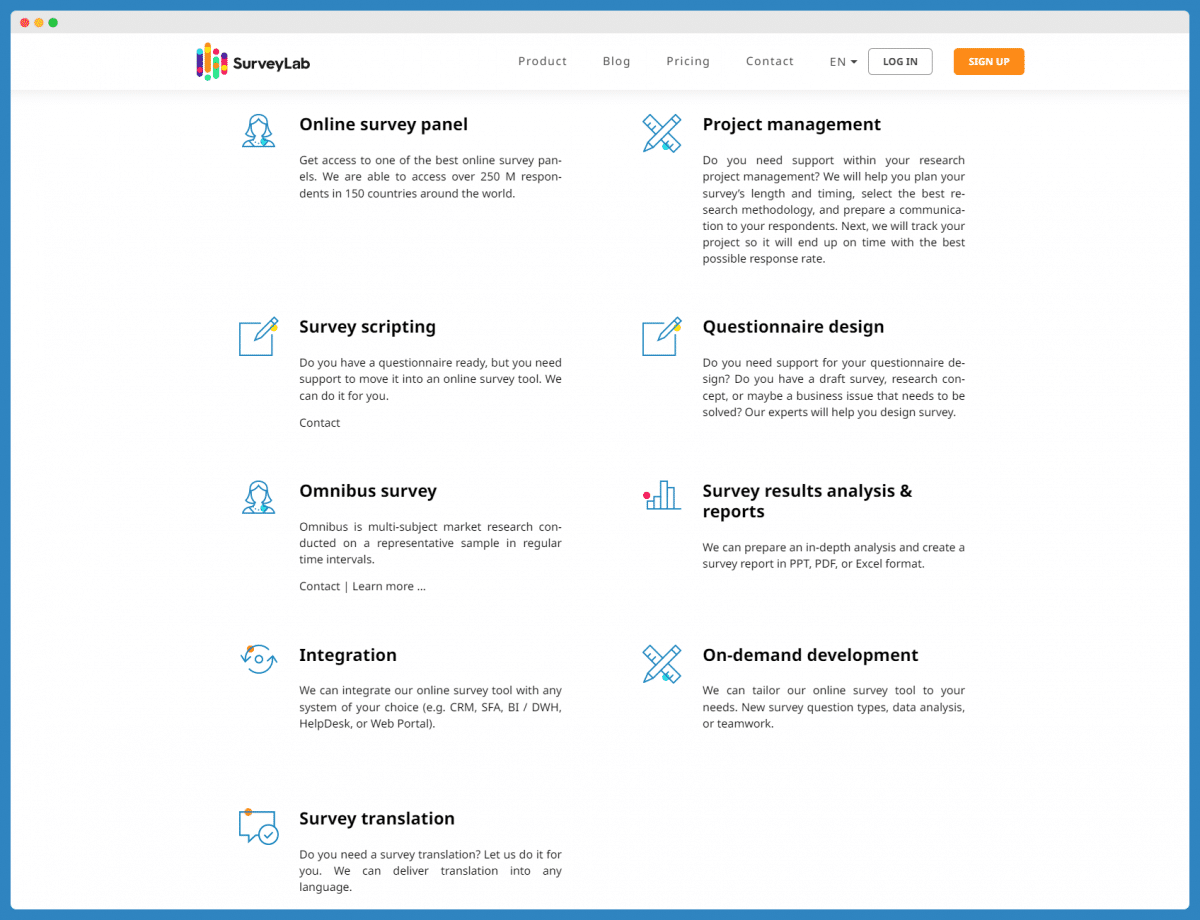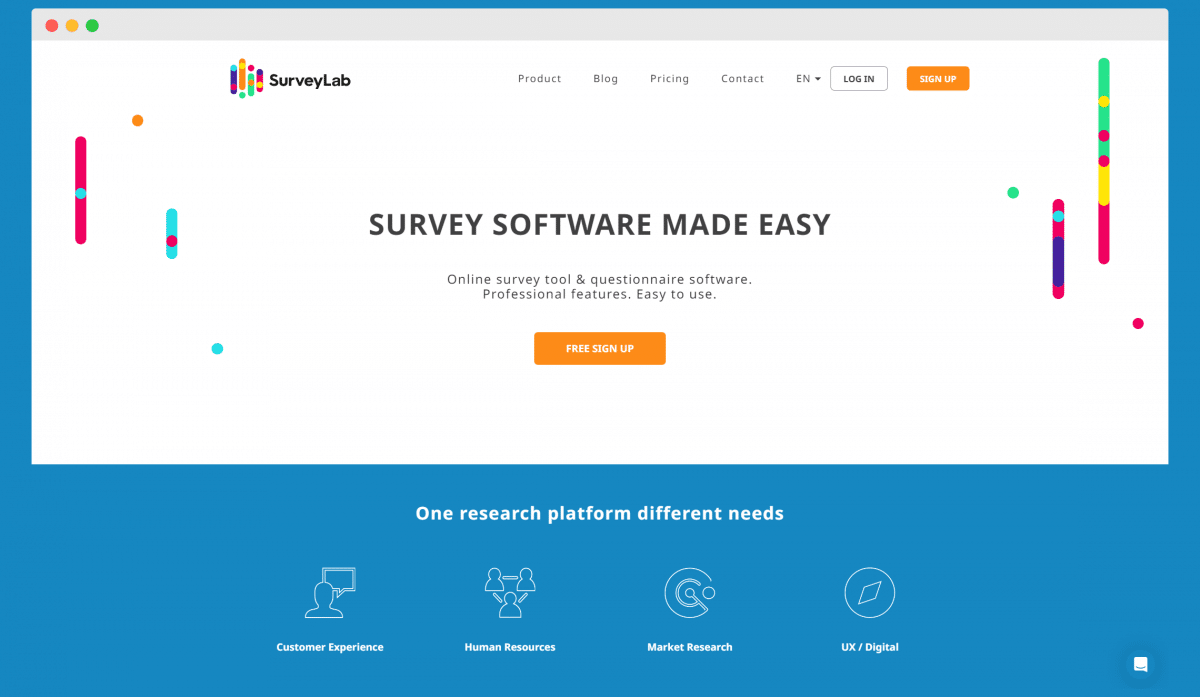Delivering quality healthcare services goes beyond treating physical ailments – it also includes understanding and improving the patient experience.
Healthcare providers and systems look at a patient satisfaction survey and publicly reported results to measure patient satisfaction and boost care quality. Data collection and quality checks matter, but a patient-centered care environment takes things to the next level and ensures lasting healthcare quality.
Let’s learn about the strategies, challenges, and benefits of using a patient satisfaction survey, patient experience survey, and other tools to measure healthcare quality.
We’ll break down their impact on both providers and consumers, offering guidelines to sidestep common pitfalls. A balanced ‘pros and cons’ look at a popular strategy comes next, along with debunking myths about a patient satisfaction survey.
Patient experience surveys: a cornerstone of healthcare quality
A patient experience survey offers a window into patient-centered care, revealing how patients truly feel about their experiences. Healthcare providers can use these insights to understand patients’ perceptions, covering areas like staff interactions, the hospital environment, and access to services. Collected data serves as a powerful tool for quality improvement and healthcare research.
But it’s not just about collecting data. Crafting well-designed surveys, encouraging diverse patient participation through random sampling, and using public reporting for transparency all play key roles. This feedback guides healthcare systems to enhance patient experiences, close care gaps, and ensure that healthcare delivery meets patients’ needs and expectations.
Example questions for a patient experience survey
Here are some sample questions that cover different aspects of care:
- Overall experience:
- How would you rate your overall experience at our healthcare facility?
- How satisfied are you with the care you received during your visit?
- Communication:
- Did the healthcare staff explain your treatment options in an understandable manner?
- How satisfied were you with the communication from your healthcare provider during your appointment?
- Staff interaction:
- Were the staff courteous and respectful during your visit?
- Did you feel that the healthcare provider listened to your concerns?
- Facility environment:
- How would you rate the cleanliness of our facility?
- Was the waiting area comfortable and well-maintained?
- Access to care:
- How easy was it to schedule your appointment?
- Were you able to see a healthcare provider within a reasonable timeframe?
- Post-visit care:
- Were you given clear instructions for follow-up care after your visit?
- Did you receive timely responses to any post-visit questions or concerns?
- Likelihood to recommend:
- How likely are you to recommend our healthcare facility to friends and family?
Using a mix of these questions helps you gain a comprehensive understanding of the patient’s experience, identify areas for improvement, and enhance the quality of care.
📚 Read more: How to Write Good Survey Questions That Get Results Today.
Myth busting: common misconceptions about patient experience surveys
Despite the widespread use of a patient experience survey, misconceptions persist. Let’s tackle a few myths and set the record straight:
Myth 1: Patient satisfaction surveys are the same as patient experience surveys.
Fact: While both types of surveys aim to assess healthcare quality, they focus on different aspects. Patient experience surveys ask patients to report on specific, objective aspects of their care, such as waiting times or communication with healthcare providers.
Patient satisfaction surveys, on the other hand, ask patients to rate their overall satisfaction with their care.
Myth 2: Survey results only reflect patient complaints.
Fact: It’s true that surveys can highlight areas of dissatisfaction, but they also provide positive feedback and highlight what’s working well in the healthcare system.
Healthcare providers can use this balanced feedback to reinforce successful practices and further improve quality health care.
Myth 3: Survey data is not reliable due to biased responses.
Fact: Many believe that survey responses are influenced by patients’ emotions at the time of completion.
However, with careful survey design, random sample selection, and the use of validated survey instruments, the data collected can reliably represent patient perceptions and drive meaningful quality improvement initiatives.
Pros and cons of implementing a patient satisfaction survey
A patient satisfaction survey offers invaluable insights for healthcare quality improvement. Their implementation comes with both advantages and challenges, though. Let’s explore these in detail:
Pros:
- Improves quality of care: By identifying areas of improvement, healthcare providers can address issues and enhance patient care.
- Encourages patient-centered care: Surveys foster a focus on the patient experience, prompting providers to prioritize patients’ needs.
- Increases accountability: Publicly reported survey data ensures that healthcare organizations remain accountable for the quality of their services.
- Facilitates benchmarking: Survey results allow hospitals to compare their performance with peers and set achievable improvement goals.
- Promotes communication: Surveys open channels for patients to express their views, fostering better patient-provider communication.
Cons:
- Survey fatigue: Repeated surveys can lead to low response rates, diminishing the representativeness of the data collected.
- Limited scope: Surveys may not capture all aspects of patient care, potentially overlooking critical elements of healthcare delivery.
- Interpretation challenges: Analyzing survey data requires expertise to avoid misinterpretation and ensure actionable insights.
- Potential for bias: Patient responses can be influenced by external factors unrelated to the quality of care, such as personal stress or dissatisfaction with unrelated services.
- Resource-intensive: Conducting surveys, analyzing data, and implementing changes can be costly and time-consuming.
📚 Read more: Customer Satisfaction Survey Software: How to Choose It?
When to run a patient satisfaction survey: four key use cases
Running a patient satisfaction survey at the right time helps you capture accurate data and ensure the feedback is useful for healthcare quality improvement.
Here are four scenarios where conducting patient satisfaction surveys or patient satisfaction questionnaires can provide valuable insights:
1. Post-discharge Evaluation in acute care settings
After a patient is discharged from an acute care hospital, it’s the perfect time to conduct a patient satisfaction survey. This survey helps gauge patients’ immediate perceptions of their hospital care, including their interactions with doctors, nursing staff, and the overall hospital environment.
Using the Hospital Consumer Assessment of Healthcare Providers and Systems (HCAHPS survey), healthcare providers can collect data on key aspects of care, such as communication with healthcare professionals, pain management, and discharge planning.
These completed surveys contribute to the centers for medicare medicaid (CMS) HCAHPS results, as they offer insights that inform consumer assessment and healthcare quality initiatives.
Use case highlights:
- Collects real-time feedback on hospital care and post-discharge processes.
- Influences the hospital’s overall rating and reputation in public consumer assessments.
- Helps improve care transitions and follow-up procedures for better patient outcomes.
2. Annual evaluation of health plans
Healthcare providers and insurance companies often run patient satisfaction surveys or consumer assessment surveys annually to evaluate health plans.
This type of survey, which may include Consumer Assessment of Healthcare Providers and Systems (CAHPS surveys), focuses on patients’ experiences with their health plans and access to care.
Key topics covered include ease of getting appointments, satisfaction with plan services, and interactions with customer support. The survey mode can range from online questionnaires to paper surveys, depending on the preferences of the patient population.
Feedback from these surveys is useful for Medicare Medicaid Services (CMS) as they use it to assess the quality of health plans and ensure they meet specific care standards.
Use case highlights:
- Measures patients’ satisfaction with their health plans and providers.
- Helps health plans and providers identify areas needing improvement.
- Influences CMS ratings and health plan rankings.
3. Quarterly check-ins for quality improvement programs
Running patient satisfaction surveys quarterly can provide actionable insights. These surveys focus on specific initiatives or service areas, such as improving patient communication or reducing wait times.
Feedback gathered through consumer focus groups or cognitive interviews can be integrated into these surveys to enhance understanding of patients’ experiences. What’s more, quarterly surveys allow providers to measure the impact of recently implemented changes and adjust strategies based on patient feedback.
Use case highlights:
- Tracks progress on quality improvement projects.
- Allows for rapid adjustments based on real-time feedback.
- Engages stakeholders and secures buy-in for ongoing improvements.
4. Targeted surveys after a major service change or initiative
When a healthcare provider implements a significant change — such as introducing a new electronic health record system or launching a telehealth program — it’s essential to run a patient satisfaction survey shortly after the change.
This can be supported by cognitive interviews and stakeholder input to ensure a comprehensive view of patients’ experiences. Using targeted surveys and diverse survey modes (such as phone interviews or online questionnaires), healthcare providers can capture specific feedback on the new services and measure their effectiveness. This approach provides early indicators of success or areas needing adjustment, helping to refine healthcare delivery and optimize patient satisfaction.
Use case highlights:
- Provides immediate feedback on new services or programs.
- Identifies any challenges or barriers patients face with new systems.
- Helps healthcare providers fine-tune service delivery and ensure easy access for all patients.
Stategic timing when running patient satisfaction surveys helps healthcare providers gain deep insights into patients’ experiences. They can drive targeted improvements in healthcare quality.
Assessing hospital care, evaluating health plans, or tracking new initiatives—these surveys act as a crucial tool for boosting patient-centered care and reaching top standards in the healthcare system.
Common mistakes in utilizing patient satisfaction surveys
Even the most well-intentioned healthcare providers can fall into traps when using patient satisfaction surveys. Avoid these five common mistakes to ensure effective data collection and patient care improvements:
- Using generic questions: Many surveys use standard questions that may not apply to all healthcare settings or patient groups. Tailor your survey instrument to your specific healthcare environment and patient population to get relevant insights.
- Ignoring low response rates: Low response rates can skew results, making it difficult to draw meaningful conclusions. Encourage participation by making surveys accessible and engaging, and consider using multiple survey modes like digital, paper, and telephone.
- Not acting on feedback: Collecting patient feedback without implementing changes can frustrate patients and erode trust. Develop a clear action plan to address survey results and communicate improvements back to patients.
- Over-surveying patients: Frequent surveys can lead to ‘survey fatigue,’ resulting in incomplete or inaccurate responses. Limit the frequency of surveys and focus on key areas to keep patients engaged.
- Focusing only on negative feedback: While it’s important to address negative feedback, don’t overlook positive responses. Celebrate successes and use them to motivate staff and reinforce effective practices.
- Not using a dedicated survey tool: Relying on manual methods or generic tools can lead to data inaccuracies, low engagement, and limited analysis capabilities. A professional survey tool makes the process easier, more secure, and delivers reliable insights.
SurveyLab offers a user-friendly solution with plenty of powerful features. It enables online survey creation without software installation — all you need is a web browser. The tool supports mobile surveys, ensuring surveys adapt automatically to any device type, so it’s very convenient for respondents. With SurveyLab, you can customize survey branding, add logos, and manage survey appearances to suit your healthcare facility’s image.
SurveyLab provides various methods to collect responses, including email, SMS, web widgets, and QR codes, making it easier to reach a wider audience. Its real-time reports and analysis tools let you dive into responses immediately. You can even share survey results using URL links or export them in formats like Excel, SPSS, or PDF for further research.
Want to start improving your patient experience today? Try SurveyLab for free with a 14-day trial and see how this tool simplifies survey creation and data collection.

Thought-provoking questions
Reflect on these questions to deepen your understanding of patient satisfaction and its role in healthcare quality:
- How can healthcare providers balance the need for honest feedback with the potential impact of negative survey results on staff morale?
- Are there more effective ways to measure patient experience beyond traditional surveys?
- How can hospitals ensure that patient feedback leads to tangible improvements in healthcare delivery?
- What role does technology play in enhancing the accuracy and accessibility of patient satisfaction surveys?
- How can patient satisfaction surveys be adapted to cater to diverse patient demographics and healthcare needs?
- What measures can be taken to mitigate survey bias and ensure that feedback accurately reflects the patient experience?
- How can healthcare systems use patient satisfaction surveys to improve not only patient experience but also clinical outcomes?
Conclusion: the road to quality healthcare
Patient satisfaction and experience surveys serve as key tools in the push for quality healthcare. By collecting insights into patients’ perceptions and experiences, healthcare providers can spot areas for improvement and elevate the care they deliver. But using these tools well takes thoughtful planning, balanced analysis, and a commitment to patient-centered care.
Including patient feedback in healthcare decisions not only boosts care quality but also builds trust and transparency between patients and providers. As healthcare evolves, patient satisfaction surveys will stay at the heart of quality improvement, bringing us closer to a truly patient-centered system.
For effective survey data collection, sign up to SurveyLab.

